Reviving Singapore’s edible heritage
From false ginseng to purslane, food collectives are bringing overlooked local ingredients back to the table for vibrant dining experiences


SINGAPORE’S edible landscape is all around us – you just have to know where to look. So says Steve Chua of Gastrogeography of Singapore (GOS), a food and art collective that creates delicious home-dining experiences out of overlooked, edible ingredients scattered across the city-state’s concrete jungle.
When Covid-19 threatened the food security of Singapore – a nation where some 90 per cent of its food is imported – culinary initiatives such as GOS, Orang Laut and Fork in the Jungle took the opportunity to remind diners that there is quiet abundance here hiding in plain sight.
The velvety tang of purslane leaves and the delicate sweetness of flower crabs are not distant memories of kampung meals, but present-day treasures waiting to be re-appreciated by urban diners. The snake fruit and cranberry hibiscus are not ornamental curiosities to beautify a whimsical garden, but culinary assets waiting to transform modern plates.
There is green beneath the grey, and each of these ingredients tells powerful stories about place and memory in Singapore. We speak to GOS, Orang Laut and Fork in the Jungle about their mission to reconnect Singaporeans with their edible heritage, as well as their creative approaches to transforming overlooked ingredients into gastronomic experiences.
Gastrogeography of Singapore
Steve Chua and Laletha Nithiyanandan (or Lita, as she wishes to be called) are multidisciplinary artists and entrepreneurs who founded GOS in 2017 as an art and food collective that explores the untapped potential of Singapore’s edible landscape.
Through immersive experiences that blend gastronomy, art and education, GOS invites urban dwellers to see – and taste – the city through a fresh lens.
“At GOS, we want people to pause and reconnect with what’s around them,” Chua says. “There’s so much growing here, but we’ve forgotten how to notice it.”
Their journey began with curiosity. While walking through Singapore’s Civic District, Chua and Lita discovered more than 100 edible plants within a 3 km radius. This revelation sparked a mission to shine a spotlight on the flora hidden in plain sight.
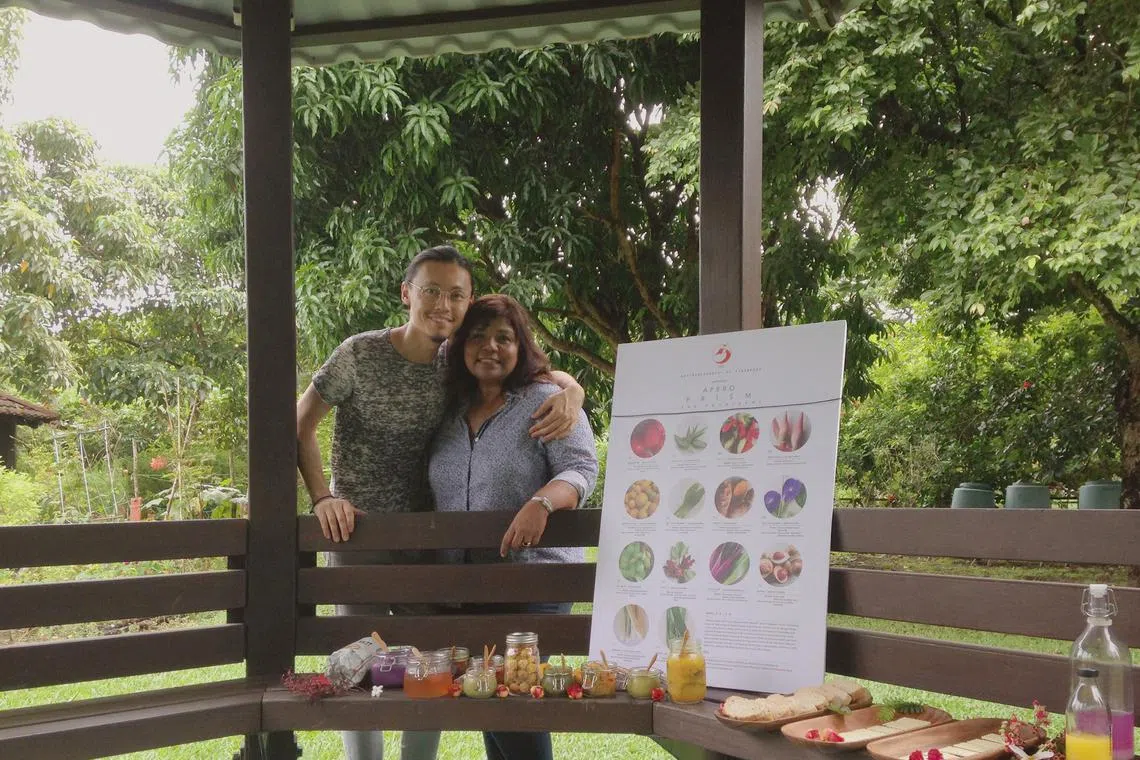
“We wanted to show people that tamarind leaves, wild pepper and purslane weren’t just weeds,” Lita explains. “They’re ingredients with stories, histories, and immense culinary potential.”
GOS initially focused on art installations and exhibitions, but soon realised that art alone wasn’t enough to inspire meaningful connections. “People connect through their senses,” Lita says. “They need to touch, taste and smell to truly engage.”
They began curating home-dining experiences and culinary workshops, where they reintroduced Singaporeans to long-overlooked ingredients such as kedondong leaves, belimbing fruits and snake fruit.
The highlights of their home-dining menu include the Singapore salad, a medley of local greens such as cranberry hibiscus, false ginseng, purslane and gynura crafted to create a salad “you won’t find anywhere else”, says Chua.
There’s also the buah keluak beef wellington, a bold reinterpretation of the classic English dish, infused with South-east Asian flavours; and torch ginger pesto, a vibrant, floral twist on the classic Italian sauce. The signature nutmeg cocktail pays homage to Singapore’s colonial history as a spice-trading hub.
“Our food isn’t just about taste,” Chua emphasises. “It’s about creating new memories while rediscovering old ones.”
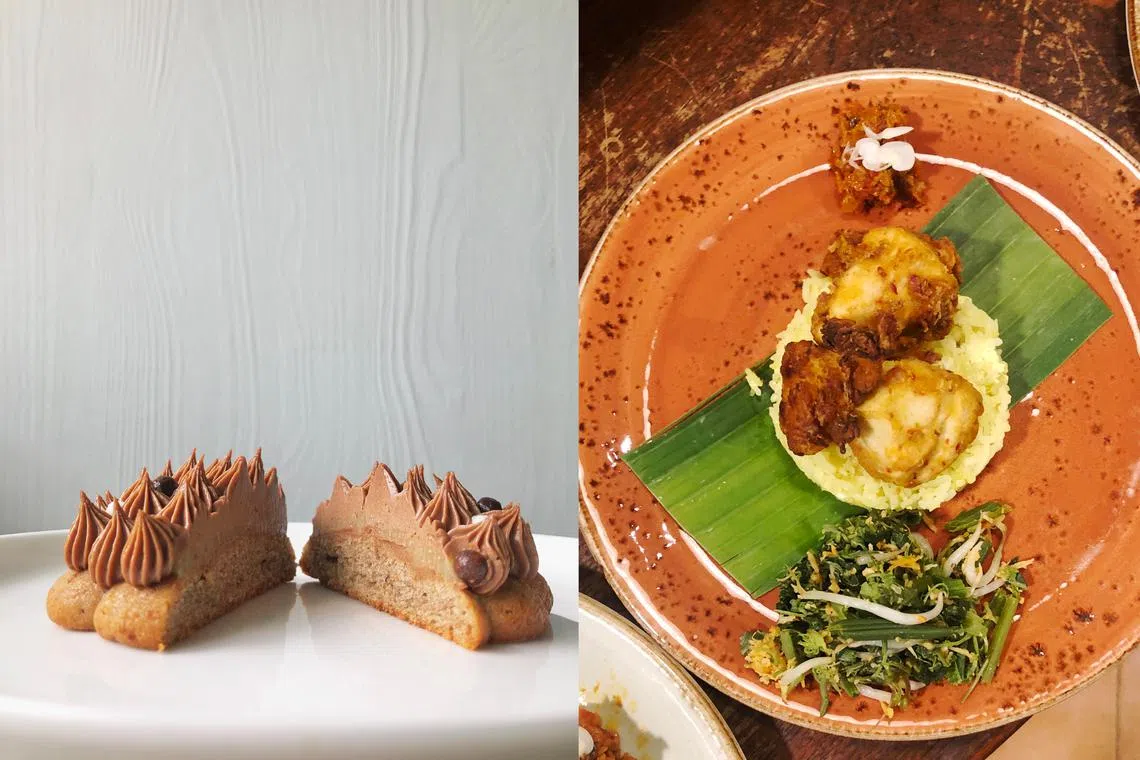
Beyond the dishes that push culinary boundaries, what sets GOS apart is its ability to weave narrative and nostalgia into every experience. Its dinners are as much about storytelling as they are about food, with each ingredient tied to Singapore’s culinary history.
“Fruits that grow in our climate, such as jujube (Chinese date), golden berry and fig, are often viewed as temperate fruits, as we only import them from places like Spain, Turkey, Colombia or China. But they grow right under our noses,” says Chua. “Meanwhile, fruits such as amla and belimbing are considered sour and unpalatable by most people. But they develop such unique flavours and aromas after high-heat browning. These are few underrated ingredients that make the biggest difference in our cooking.”
Lita concurs, saying: “People light up when they recognise something that they’ve seen or tasted from their childhood. We’ve made a French soup with choko vine, fritters out of basil flowers, ceviche using torch ginger, as well as a hibiscus toasted coconut sauce and a buah keluak mushroom sauce... Our diners never fail to be surprised by our creations.”
For gastrogeography tours or private dining experiences, email lita@gos.sg or steve@gos.sg
Orang Laut SG
The orang laut (sea people in Malay) are an indigenous, nomadic maritime people who historically lived along the coasts and islands of South-east Asia, including what is now modern-day Singapore. They played a significant role in the region’s history, particularly during the pre-colonial period.
As Singapore’s coastal islands were reclaimed for urban and industrial projects, these orang laut were gradually relocated to the mainland. Despite this shift, many descendants of the orang laut have preserved distinct aspects of their heritage, sharing their cultural legacy through food and traditions.
Among them is Firdaus Sani, a fourth-generation orang laut who founded a community-centred enterprise of the same name, which offers pop-up dining experiences and home-based food delivery. Established in 2020, Orang Laut SG invites patrons to discover the rich heritage of these seafaring communities that once thrived along the coasts of Singapore and the Riau Archipelago.
This home-based business blends time-honoured practices with mindful ingredient sourcing, capturing the deep-rooted values of the orang laut. “Traditionally, our way of life depended on what the land and sea could provide,” Firdaus explains. In the past, the orang laut freely fished and foraged, gathering only what was necessary. But today, the law limits access to these practices.
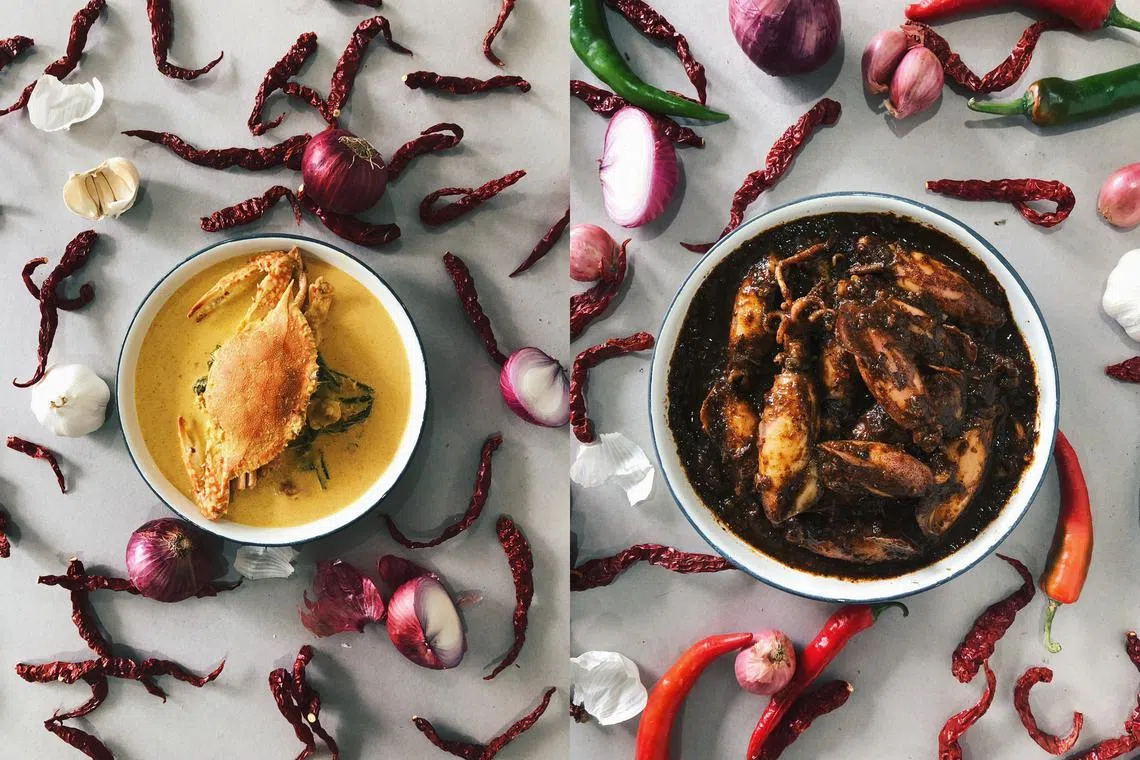
Firdaus observes that many everyday ingredients that Singaporeans purchase in supermarkets can be grown locally. In contrast, his family tries to cultivate the ingredients they need, an experience that nurtures a deeper appreciation for the environment. By growing plants such as turmeric and lime leaves, the family forges a deeper connection with what they cook.
“From seed to leaf to our table, I can see the joy in my mum’s eyes. This is her culture, her tradition,” he says. His mother often brings home seedlings she recalls from her childhood to grow in their garden, nurturing a link between generations.
When sourcing ingredients, Firdaus focuses on local produce to lessen its carbon footprint. He buys from nearby markets and coastal communities in the Riau Islands, such as Pulau Kasu, which is around an hour’s boat ride from Singapore. He also purchases seafood from the community fishermen in the Republic, ensuring the quality of its ingredients while supporting traditional livelihoods. Orang Laut SG also uses reusables such as tingkats for packaging, and customers are asked to place their orders at least 24 hours in advance, allowing the team to purchase and cook only what is necessary.

Firdaus’s home-based business honours the legacy of his grandparents who once lived on Pulau Semakau, now transformed into the Semakau Landfill. Some of his favoured ingredients include ulam-ulam (traditional herbs and vegetables) such as winged beans and ulam raja – which his ancestors once foraged for – along with seafood such as sotong nos and ikan tenggiri (mackerel).
A standout dish is sotong hitam (black squid) which features tender sotong nos cooked in a velvety blend of black sauce made with garlic, dried chilli, onion and squid ink. Ketam lemak (flower crab) is cooked in a savoury coconut gravy that enhances the sweetness of the succulent crab meat. Another customer favourite is pucuk ubi (tapioca shoots) which is paired with kuah kacang (peanut sauce) or sambal ikan bilis.
The Malay phrase, ikut hati kau, or “follow your heart”, encapsulates Orang Laut SG’s approach to cooking. Though its preparation appears simple, focusing on the mere freshness of seafood and vegetables and enjoyed with warm rice, the experience isn’t supposed to be ordinary. The dishes are designed to be shared, transforming each communal meal into a celebration of what has been gathered from nature.
Firdaus describes the Malay word “ramuan” as the act of sharing one’s harvest with others. To foster this spirit, Orang Laut SG regularly hosts foraging workshops, encouraging others to embrace the generosity of ramuan. The aim is to share the rich culinary heritage of the community, ensuring it endures.
Visit oranglaut.sg
Fork in the Jungle
Tucked away in a Balinese-inspired villa beside the verdant Bukit Timah forest, Fork in the Jungle is a hidden culinary sanctuary that beckons guests with its magical blending of Italian countryside traditions and tropical South-east Asian flavours, resulting in fusion dishes such as durian-filled ravioli or beef rendang pasta.
Created in 2020 by Federico Folcia, co-founder of the community platform Crane, this boutique dining experience is more than just a meal – it is a “passion project” where connections flourish over shared tables, and palates seamlessly transcend culinary borders.
At the heart of the private-dining venture’s philosophy is the Italian-rooted “zero kilometre living” approach, which promotes using local and seasonal resources to reduce carbon footprint and support community sustainability. Many ingredients such as coconuts, papayas and kangkong are harvested directly from the estate’s garden. “We find joy in growing our own ingredients and picking them from our trees and plants,” Folcia says.
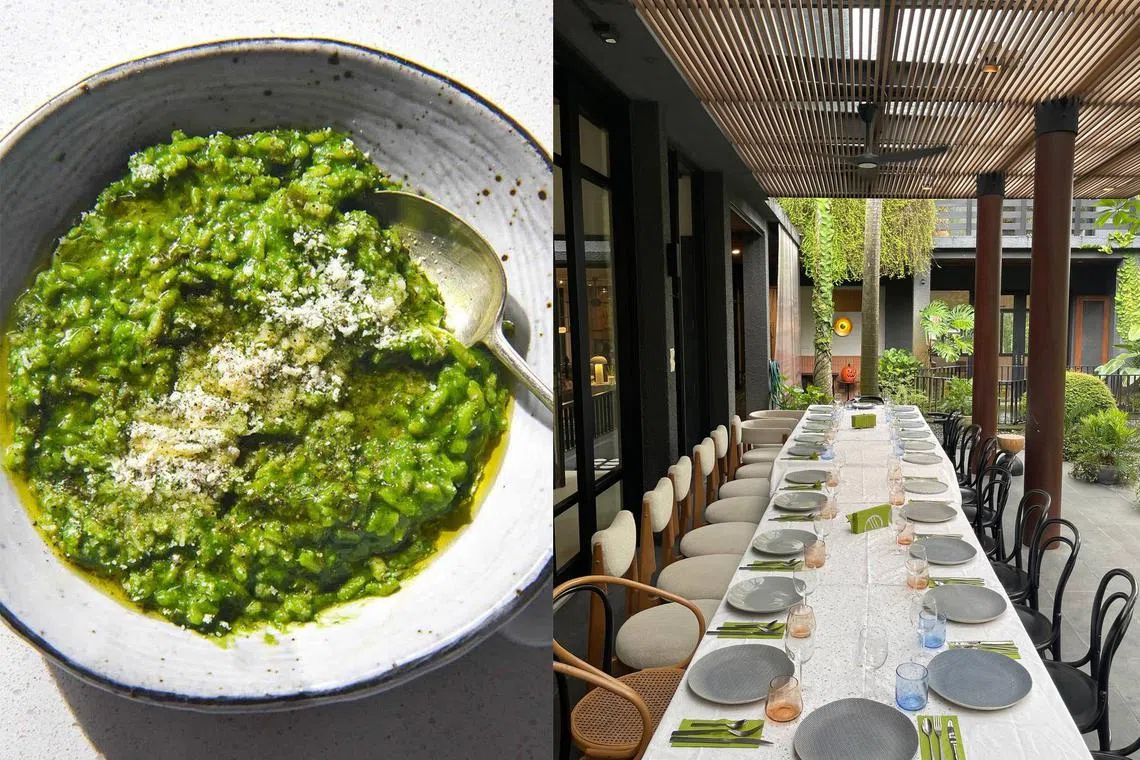
The team also preserves local ingredients for later use, employing fermentation techniques such as using saltwater brine for wild greens, and crafting kombucha from jackfruit and bananas blended with sweeter fruits such as pineapple.
Fork in the Jungle has a “soft spot” for ugly foods – those misshapen or cosmetically imperfect fruits and vegetables that traditional suppliers often overlook or discard. Folcia explains: “It’s a win-win that helps us cut down waste, while supporting local farmers.”
Highlights on the menu make the most of the estate’s home-grown ingredients. The risotto with foraged watercress and salted peanuts combines the earthiness of wild-picked watercress with creamy risotto, and a hint of lime zest for a refreshing lift.
Another popular dish is the cantaloupe pandan sorbet, which brings together the natural sweetness of fruit and the fragrant essence of estate-grown pandan for a uniquely South-east Asian twist. Meanwhile, the Indo jackfruit stews are rich and hearty, using jackfruit from the estate’s trees.
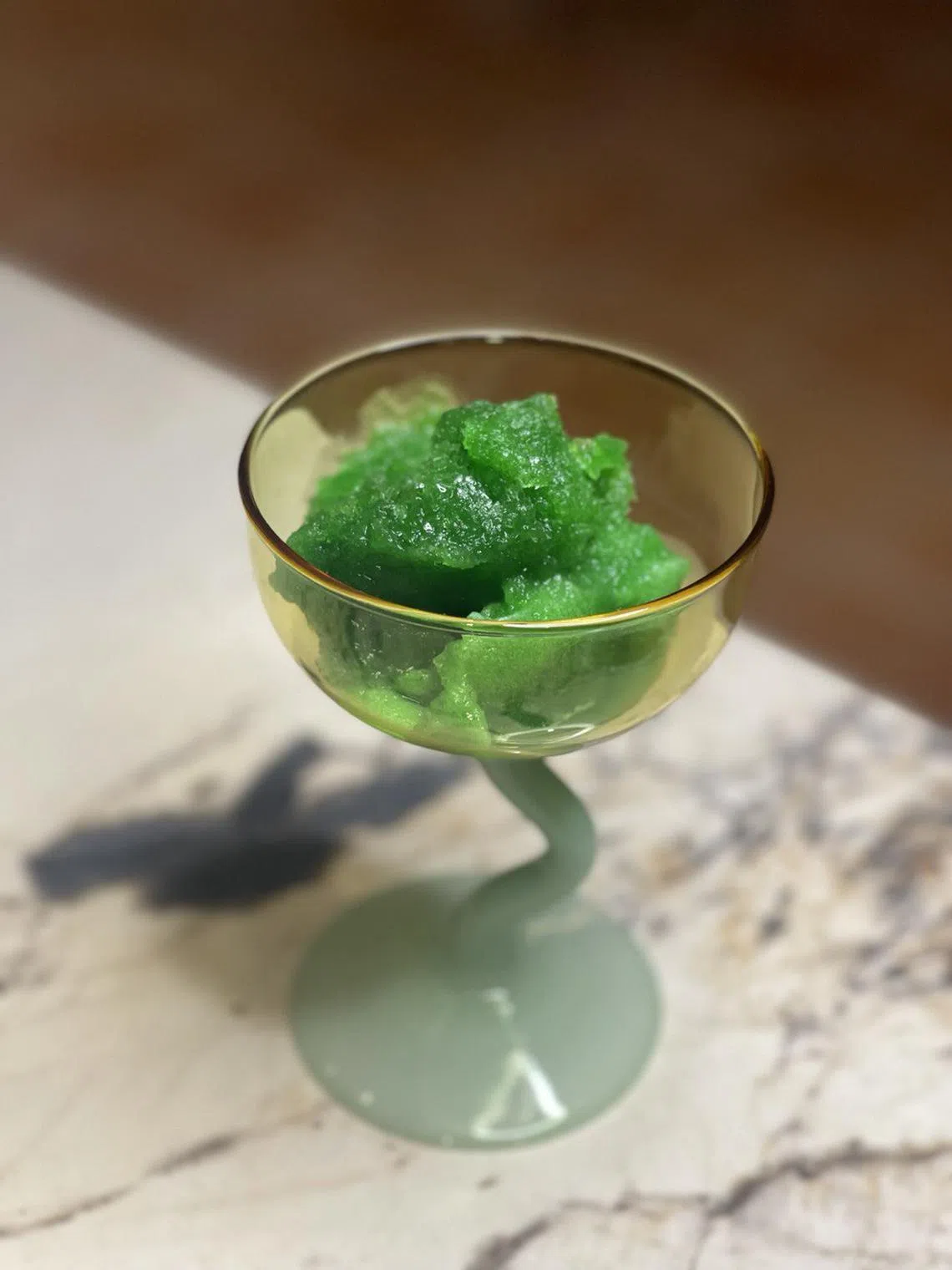
On his favourite ingredients to cook with, Folcia shares: “I’m all about that tempeh for its versatility, tomatoes for their flavour, any fish for that fresh taste, and legumes like beans for their heartiness. Each one adds something special to our dishes and keeps things exciting.”
Fork in the Jungle does not stop at sustainability on the plate; it aims to spark conversations around food origins and eco-conscious living. Its upcoming Seed to Soul dinner series, in collaboration with community platform Crane, will invite experts to share insights on hydroponic farming, alternative protein sources, gluten-free options, and the benefits of ugly foods.
“We’re not just serving meals – we’re changing how people think about food and sustainability, one dish at a time,” he says.
Sustainability is a continual journey for the restaurant. Folcia and his team compost waste, use every part of their ingredients, avoid single-use plastics and closely monitor water usage. They also create stock from leftovers, ensuring minimal waste in every dish. Fork in the Jungle’s embrace of eco-conscious practices and locally sourced ingredients makes it more than a dining experience; it proves that conscious culinary choices can nourish people without destroying the planet.
Visit forkinthejungle.com
Decoding Asia newsletter: your guide to navigating Asia in a new global order. Sign up here to get Decoding Asia newsletter. Delivered to your inbox. Free.
Copyright SPH Media. All rights reserved.


